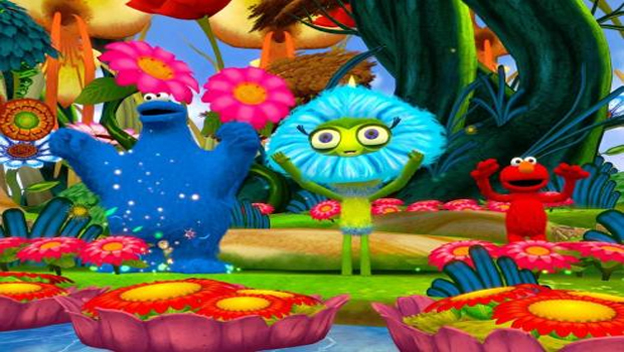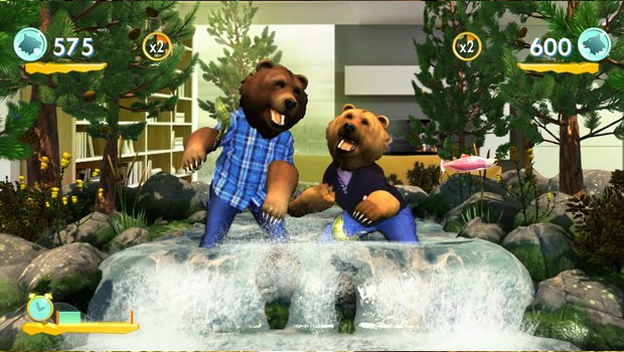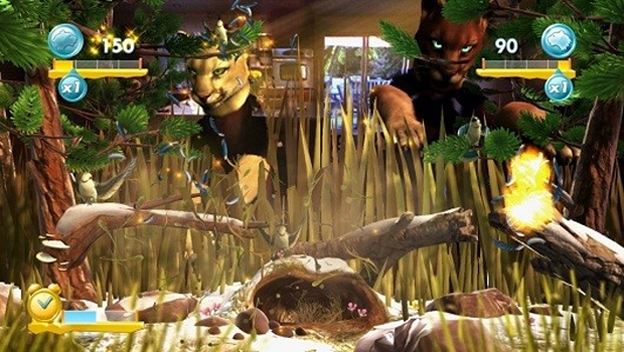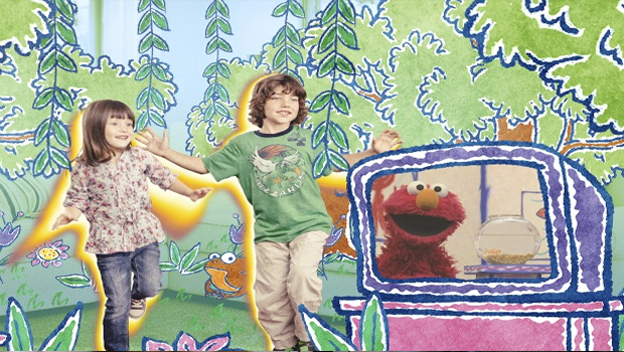Educational Learning TV
When I was a young child, I had an educational Sesame Street toy that hooked up to my VHS player. It was a simple little thing with four colored buttons that allowed me to interact with special Sesame Street tapes. Essentially, an episode of Sesame Street would play as normal until one of the characters asked me, the curious toddler, a question. That was when this ingenious little toy would do its job. It would pause the tape and wait for me to press a button. Then, after I had made my decision, it fast-forwarded the tape to the portion that corresponded with the choice I made. This way, I was actually able to interact with my favorite Sesame Street characters and even decide how an episode of Sesame Street would end.
They actually had a lot of simple little toys like this back then, even producing interactive books and audio cassettes. My favorite was Furry Old Grover in Please Don’t Push the Red Button , where the entire purpose was to press any button except the red one, or Grover would have a meltdown at the end of the book. I always pressed the red button. I was an awesome kid.

Soho Productions and Microsoft Studios’ new Kinect Sesame Street TV is essentially the same thing for a new generation. Once again, children are placed in front of their TV to watch an episode of Sesame Street, and once again, the episodes pause whenever the characters try to interact with the viewer. However, instead of a console with some brightly colored buttons, children get to participate using the Kinect’s motion control and voice recognition technology. When Big Bird asks your child to say a word, the Kinect can actually hear your child say the word in question. When Elmo asks your child to point something out on the screen, the Kinect can actually tell what your child is pointing at. This doesn’t break the Sesame Street mold too much, as anyone my age probably remembers that the Sesame Street characters would frequently stop to interact with the audience. It’s just that—aside from the things I’ve mentioned at the beginning of this article, which were crude at best—the audience never really had a way to interact back.
While the activities that Sesame Street TV asks your child to perform could have right or wrong answers, there’s never any penalty for messing up. Your child gets lots of praise for doing something right and simple encouragement along with some extra help whenever they do something wrong. The episodes never actually stop, even if your child continually screws up. They just find a way to continue forward so as to not cause your child frustration.

As a result, Kinect Sesame Street TV isn’t really a “game” per se, but it isn’t really trying to be. There’s no way to win or lose; there are just subtle ways to alter the way the episodes play out. This means that Kinect Sesame Street TV can actually be better described as a cinematic experience. Yes, Kinect Sesame Street TV is in the same genre as Heavy Rain and The Walking Dead, and that actually says something about this new “interactive media experience genre” that we have managed to develop.
You see, there isn’t a whole lot of freedom in Kinect Sesame Street TV, but there is a lot of interactivity. The episodes are always about the same length, and the interactive elements are always exactly the same in the exact same spaces. But children don’t particularly care about having ultimate control over the episode. They are simply happy being a part of the story. It’s incredibly stimulating for a developing imagination.

Soho Productions also did a magnificent job in creating the illusion of true communication. For example, the Kinect can not only tell how your child is moving, they can also tell what color shirt he or she is wearing, so the characters can comment on this over the course of the episode. The illusion of interaction is so incredibly strong that children can get easily get addicted, constantly calling out for another episode.
In addition, there are portions of the episode that show your child inside the episode itself. The Kinect camera simply places them into the action in a green screen sort of way. The characters interact with them as the player moves. The only unfortunate aspect of this is that there is a bit of input lag associated with the Kinect’s motion tracking, and this can frustrate kids in some activities.
But that’s the key here: These activities are active. The kids get off the couch and are tasked with jumping, clapping, and moving their bodies. They aren’t simply pressing buttons and making Grover have a nervous breakdown. They are exercising their bodies and minds. Kinect Sesame Street TV integrates the best parts of our medium into one invaluable learning tool.

Simply purchasing the retail version of the game will get you two DVDs with four thirty-minute episodes each. It’s enough to keep any child entertained for quite some time, as many kids ultimately take it upon themselves to attempt to replay failed sections by watching an entire episode over again.
However, this isn’t the end of the Kinect Sesame Street TV experience. More episodes are going to come out in the future, and the retail version of the game comes with a season pass that grants you access to all of them. It also grants you access to a whole lot of other stuff, including other non-interactive Sesame Street clips for your child to have fun with.
It’s hard to rate Kinect Sesame Street TV fairly. I’m a hardcore gamer with no kids of my own, so I’m not really part of its target demographic. Luckily, I do have friends with young kids who made for some excellent guinea pigs. The verdict? Kinect Sesame Street TV is awesome. So if you are looking for a cool new game to get your preschooler this holiday season, look into Kinect Sesame Street TV. You’ll be happy you did.
RATING OUT OF 5 RATING DESCRIPTION 3.9 Graphics
Live action actors make this look like a real Sesame Street episode. 4.1 Control
The Kinect does not seem to miss a beat when picking up your child’s movements. 3.8 Music / Sound FX / Voice Acting
The Sesame Street cast does a great job in voicing their roles. 4.2 Play Value
Preschoolers will love this. 4.0 Overall Rating – Great
Not an average. See Rating legend below for a final score breakdown.
| Review Rating Legend | |||
|---|---|---|---|
| 0.1 – 1.9 = Avoid | 2.5 – 2.9 = Average | 3.5 – 3.9 = Good | 4.5 – 4.9 = Must Buy |
| 2.0 – 2.4 = Poor | 3.0 – 3.4 = Fair | 4.0 – 4.4 = Great | 5.0 = The Best |
Game Features:
